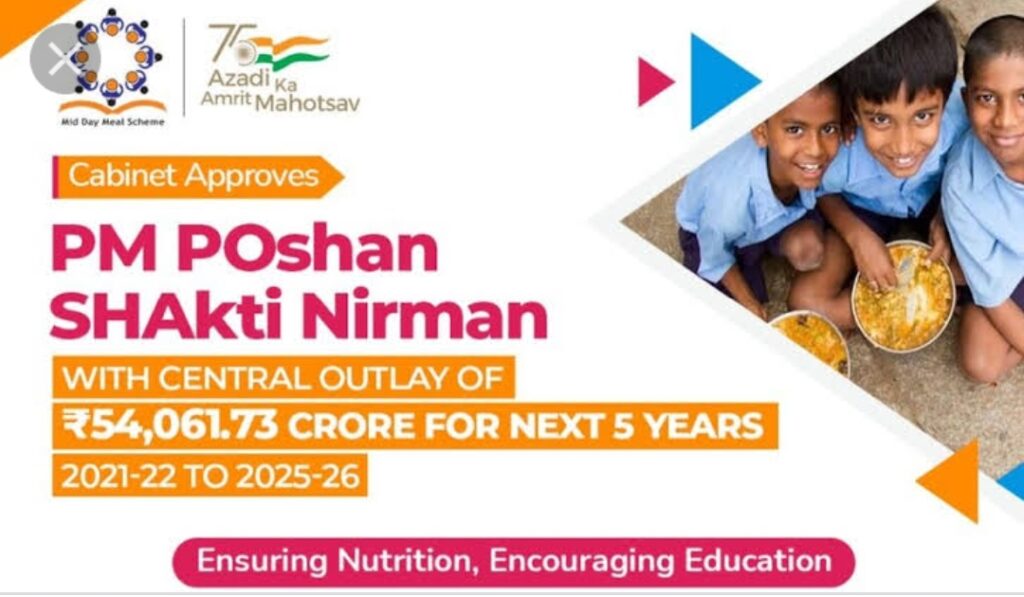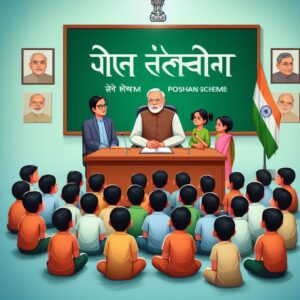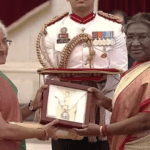The Pradhan Mantri Poshan Shakti Nirman (PM POSHAN), formerly known as the National Program of Mid-Day Meal in Schools, is a transformative initiative under the National Food Security Act, 2013. This scheme, with its primary focus on enhancing the nutritional and educational needs of children across the nation, marks a significant milestone in India’s efforts to combat hunger and malnutrition among its young population.
Objective of PM POSHAN
The primary objectives of PM POSHAN are multi-faceted, aiming to improve the nutritional status of children, boost school attendance, and provide support in disaster-affected areas. By addressing these critical issues, the scheme strives to create a healthier and more conducive learning environment for children in Government and Government-aided schools.
Key Features of PM POSHAN
PM POSHAN encompasses several key features that distinguish it from its predecessor, the Mid-Day Meal Scheme. These include expanded coverage to include primary and upper primary schoolchildren, nutritional gardens to promote locally grown food items, provision for supplementary nutrition in aspirational districts, and the implementation of Direct Benefit Transfer (DBT) for efficient fund distribution.
Financial Allocation of the Scheme
The Cabinet Committee on Economic Affairs (CCEA) has allocated a substantial budget of ₹1.31 trillion for PM POSHAN, highlighting the government’s commitment to addressing child nutrition on a national scale. This funding, spanning five years, underscores the scheme’s significance in improving the well-being of children across India.

Img Src:-kashmirconvener.com
Challenges Ahead
Despite its potential, PM POSHAN faces several challenges that need to be addressed for its successful implementation. These include logistical hurdles in delivering nutritious meals to schools, maintaining quality standards, ensuring financial sustainability, and fostering community engagement. Addressing these challenges will require concerted efforts from all stakeholders.
Enhancements and Future Prospects
PM POSHAN’s future prospects include expanding its benefits to pre-primary education, promoting the concept of Tithi Bhojan, emphasizing school nutrition gardens, making social audits mandatory, and encouraging culinary innovation and local empowerment. These enhancements aim to further strengthen the scheme’s impact and reach.
Click Here For More Latest Govt Schemes
Conclusion
In conclusion, PM POSHAN represents a holistic approach to addressing child nutrition and educational access in India. By focusing on enhancing the nutritional status of children, boosting school attendance, and fostering community engagement, the scheme has the potential to significantly improve the lives of millions of children across the nation.
Click Here To Know More About Scheme https://pib.gov.in/Pressreleaseshare.aspx?PRID=1812421
FAQs
- How does PM POSHAN differ from the Mid-Day Meal Scheme?
- PM POSHAN expands the coverage to include primary and upper primary schoolchildren and focuses on enhancing the nutritional status of children through various initiatives.
- How are nutrition experts appointed in schools under PM POSHAN?
- Nutrition experts are appointed in each school to monitor health aspects like Body Mass Index (BMI) and hemoglobin levels, ensuring the well-being of children.
- What role do Farmers Producer Organizations (FPOs) play in PM POSHAN?
- FPOs play a crucial role in implementing PM POSHAN by supplying locally grown nutritional food items from “school nutrition gardens,” fostering local economic growth.
- How does PM POSHAN address the nutritional needs of children in disaster-prone areas?
- PM POSHAN offers nutritional support during summer vacations to children in drought-affected and disaster-prone regions, ensuring continuity in their dietary needs.
- What are some key challenges in implementing PM POSHAN?
- Key challenges include logistical hurdles in delivering nutritious meals, maintaining quality standards, ensuring financial sustainability, and fostering community engagement.










